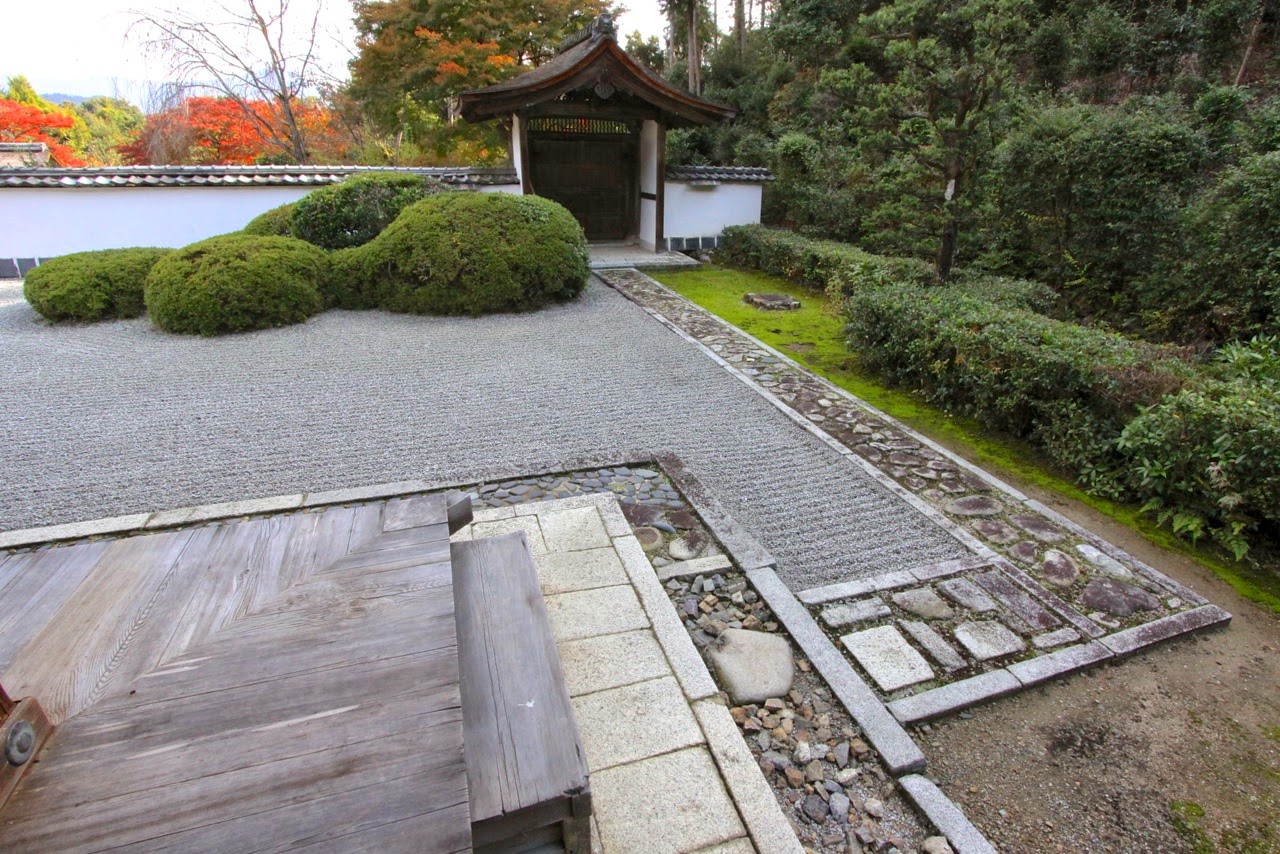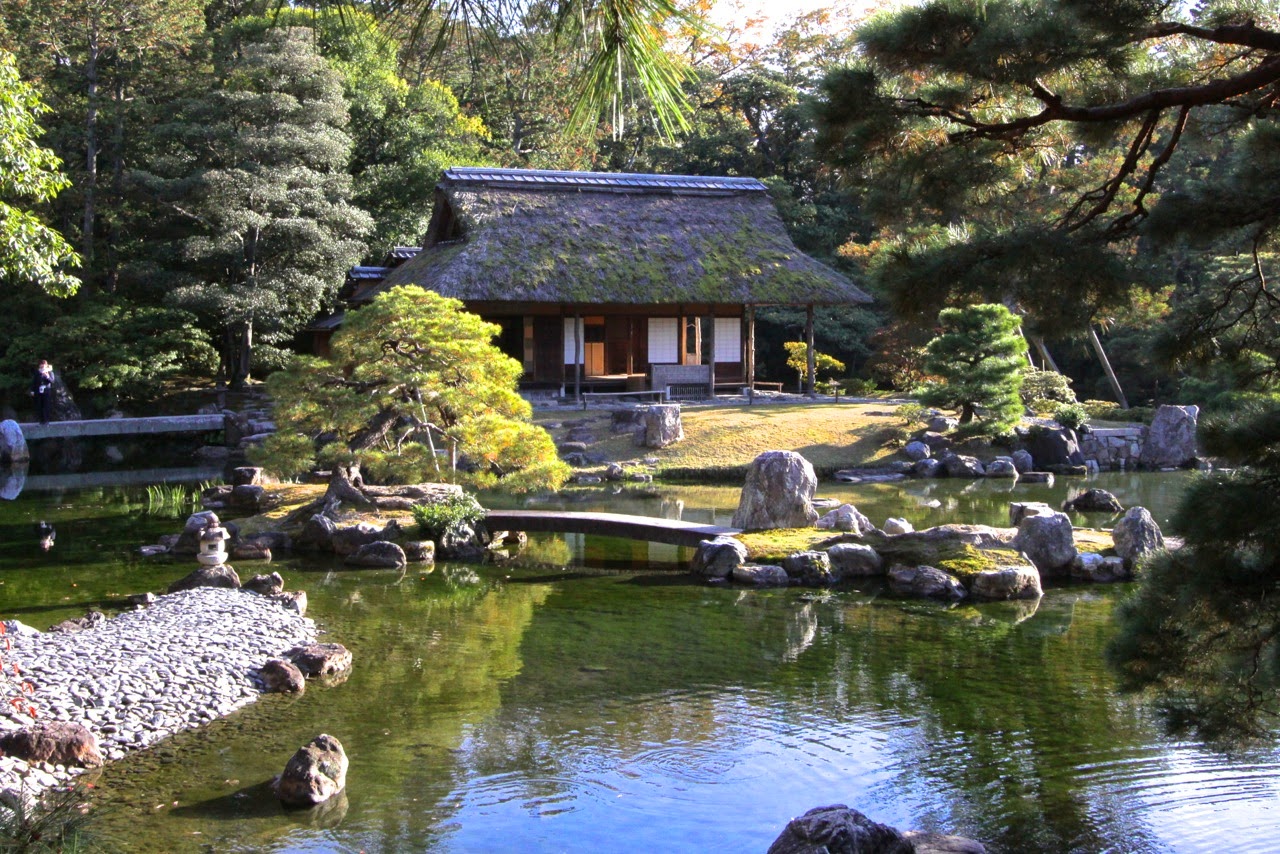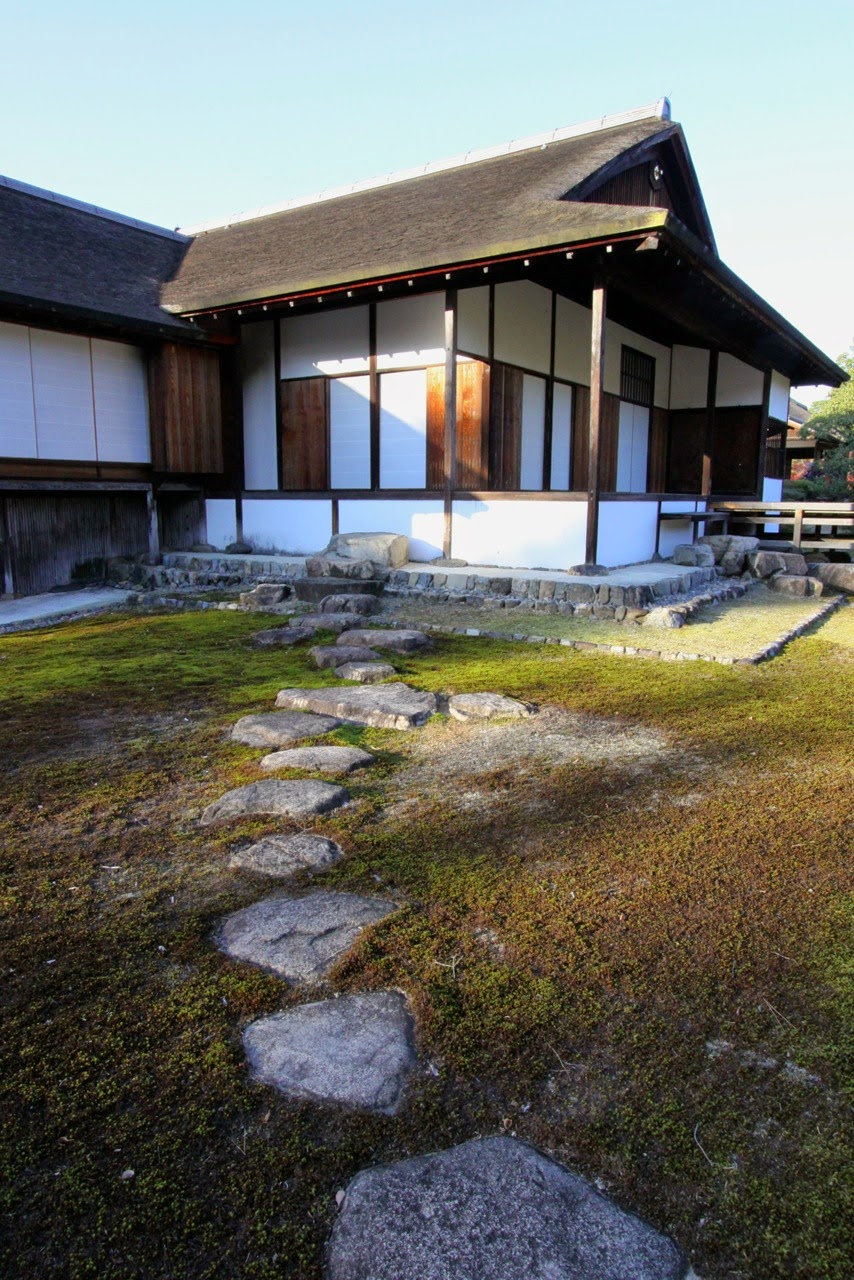5.) EDO ERA (1603 – 1867):
 |
| EDO ERA (1603 – 1867) RENGE-JI |
• EDO ERA (1603 – 1867) RENGE-JI
With civil peace and prosperity, which characterized the Edo Era, some gardens quietly retreated into the woodwork. This one, built up against a cliff, was known for its borrowed view of the trees up said cliff. However the trees immediately around the pond have grown so as to block much of that view. It makes the feeling of enclosure and intimacy very strong.
 |
| EDO ERA (1603 – 1867) RENGE-JI |
• EDO ERA (1603 – 1867) RENGE-JI
Now this is something one does not see everyday…a Chinese stele in a Japanese garden. It is quite authentic: a slab of stone incised with some important story, standing on a large tortoise (turtles!!) with an unusual cap-stone (in China the important ones are inside an open-air enclosure - think azumaya).
The founder of this temple was a priest at Manshu-in, in Kyoto, a temple with a long Chinese connection. His master there was from China, and when the founder died, the Chinese priest had this stele made in China and erected here. As is often the case, the inscription is a recounting of his disciple’s life and deeds.
 |
| EDO ERA (1603 – 1867) SHŌDEN-JI |
• EDO ERA (1603 – 1867) SHŌDEN-JI
Here is a borrowed view that has not been occluded! Built to view Mt. Hiei on the horizon, the entire city of Kyoto, which spreads from here to it, is hidden by the trees, which the temple owns. It is also protected from high rises being built on this side, since the temple owns the land beyond and has put a golf course on it.
 |
| EDO ERA (1603 – 1867) SHŌDEN-JI |
• EDO ERA (1603 – 1867) SHŌDEN-JI
Temples are often laid out with the Main Gate directly accessing the garden, which fronts the main building. But only the most VIP of VIP’s gets to use it (we normal folk come in the side door). However the walk from it, to the main building is carefully maintained and becomes an element of the overall garden design.
 |
| EDO ERA (1603 – 1867) IMPERIAL KATSURA RIKKYU |
• EDO ERA (1603 – 1867) IMPERIAL KATSURA RIKKYU
OK, so this is Edo too, but since Katsura and our garden have a close relationship I am including it as well. Certainly the suhama with the Misaki Lantern is familiar to us all. Now look beyond: island with pine tree – stone bridge – another island (missing it’s pine… recently died) and off camera to the right, another bridge to the shore. Seem familiar? Our bridge is wood, and we have only one island, but hey, the Imperial Family had more resources. This is a representation of Amanohashidate, a famous crescent of sand covered with pine trees on the Japan Sea Coast. Beyond this is a teahouse. And as you know our garden design called for a building beyond our bridges and island.
 |
| EDO ERA (1603 – 1867) IMPERIAL KATSURA RIKKYU |
• EDO ERA (1603 – 1867) IMPERIAL KATSURA RIKKYU
Now I doubt our designers had in mind something as grand as the Old Villa at Katsura. Often held up as THE iconic building of traditional Japanese architecture, is has a moon viewing platform, just going off screen to the right, facing the center portion of the garden.
And the stepping-stones indicate that this is not a VIEW garden, but it is a STROLL garden (tho the Imperials may have boated about more than traipsed across stepping stones).
 |
| EDO ERA (1603 – 1867) IMPERIAL SHUGAKU-IN |
• EDO ERA (1603 – 1867) IMPERIAL SHUGAKU-IN
Here is STROLL on a grand scale. Sure, they probably boated about too, but to get to this vantage point there had to be some climbing involved. And engineering too...a pond on the side of hill? They do it all the time for their rice fields by building a dam across the hill…the straight line on the opposite shore is the top of the dam. It is also SHAKKEI (“borrowed landscape”) on a grand scale as well… incorporating all the hills in north Kyoto and beyond. Would a retired Emperor settle for less?
 |
| EDO ERA (1603 – 1867) IMPERIAL SHUGAKU-IN |
• EDO ERA (1603 – 1867) IMPERIAL SHUGAKU-IN
Needless to say seeing these “Imperials” is pretty popular, but the guided groups are limited to 40, so reservations are made, and groups fill, months in advance. However, knowing that for many foreign tourists that is difficult to do, it is usually possible to get a spot if not the same day one applies, within a few days, so all of us were able to do so. Also for our benefit, they loan audio guides in English, keyed to the number at each stop…6 in this case…so when not too busy taking photos one can hear about the location.
_________
Next (last) post on SJG field trip to Japan: MODERN ERA...

No comments:
Post a Comment
Note: Only a member of this blog may post a comment.